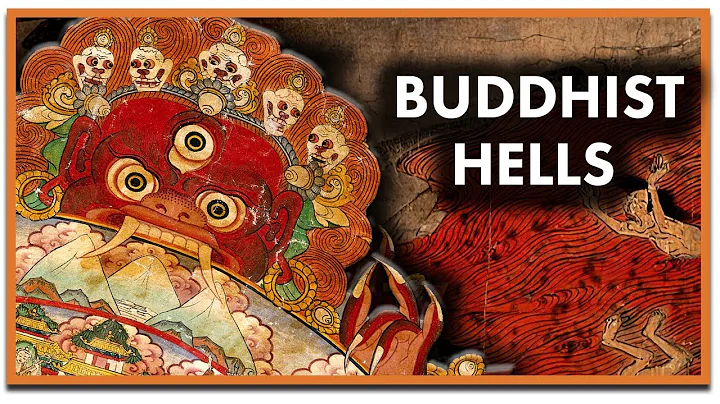Scholars are basically skeptical about the "Ming Emperor seeking the Dharma" circulated in the history of Buddhism, but people believe in the first Chinese-translated Buddhist scripture "Forty-Two Chapters" that is associated with it. This means that people would rather believe in the authenticity of what they need, and contradictoryly deny the relevant things, which is an emotional need.

Recent photos of Zhang Shengli, founder of the Long March of Culture,
"Forty-two Chapters of Sutra" About 2/3 of the content is from " Dharma Sentences and Sutras ". It is equivalent to the verse part of the "Dharma Sentences". The Dharma-Savage Venerable was a Northern Indian in the first century AD. He reorganized the Buddhist scriptures that have been recited from ancient times and compiled new "Dharma Sutra", which consisted of thirty-three grades, from the "Impermanence" to the "Brahma Book". There is a saying in the "Dharma Sentences": "If life is to be exhausted day and night, you can work hard in time. The truth in the world is extraordinary, so don't fall into the darkness." True: The meaning of the truth that is true and not false is, such as the false truth in the world, is called the conventional truth, and the truth of Nirvana and Silence is called the true truth. Very: also known as impermanence, refers to the impermanence of all things in the world. [Translation] Life disappears day and night. People should work hard to practice. The truth in the world is not impermanent. Don’t be confused and fall into ignorance and darkness. The Forty-Two Chapters of the Sutra are not the first sutra, nor are they direct translations, but a copy of the sutra in one place. The existing "Dharma Sutra" was translated by Zhi Qian during the Three Kingdoms period. According to the preface of Zhi Qian's version, there was another translation before him, so the "Dharma Sutra" at the end of the Han Dynasty.

calligraphy works by Zhang Shengli, the founder of the Long March of Culture,
"Forty-Two Chapters of the Sutra" should be copied and polished. The time when he copied the Sutra was quite late. Zhi Qian was a translator of Buddhist scriptures during the Three Kingdoms period, also known as Zhi Yue, whose courtesy name was Gongming. He was originally from Yuezhi, so his surname was Zhi. His grandfather Fadu led hundreds of people to settle in China during the reign of Emperor Ling of the Eastern Han Dynasty, so Zhi Qian was born in China. He was taught by Zhi Liang of the same clan, and Zhi Liang received his career by Zhi Prophecy. All three of them were famous in the world, and it was said that "the world is well-known, but there is no three branches." In the late years of Emperor Xian of Han, Zhi Qian entered Wu because of his extraordinary intelligence, and people at that time called him a "think tank". From the second year of Huang Wu to the second year of Jianxing, the Buddhist scriptures " Great Mingdu Wuji Sutra" and "Great Amitabha Sutra" were translated into 88 volumes, including "The Great Amitabha Sutra", and 118 volumes, and created the three constituents of "Prajna Continuous Sentences of Brahma Chan". The translation focuses on the Mahayana "Prajna Nature Emptiness" and is the master of the translation of the scriptures after An Shigao and Zhichen.

calligraphy work by Zhang Shengli, founder of the Long March of Culture,
Modern scholars believe that the "Forty-Two Chapters of Sutra" was copied during the Eastern Jin period. The reasons are: 1. This sutra was first seen in the "Zhimindu Record" during the reign of Emperor Cheng of the Eastern Jin Dynasty, so it should be published before this record. 2. During the reign of Emperor Hui, Taoism and Buddha debated that Wang Fu wrote " Laozi Hua Hu Sutra ", saying that Buddhism was a fake sutra, but did not mention the name of "Forty-Two Chapters". It can be seen that there was no such sutra at that time, otherwise Wang Fu would never have witnessed this so-called first-hand Buddhist scripture without attacking it. Therefore, the age of copying this sutra cannot exceed the "Hua Jing" at the earliest, and the latest cannot be later than the "ZhiSensitivity Record". The last year of Emperor Hui was in 306 AD, and the last year of Emperor Cheng was in 342 AD, which occurred around the thirty years.

calligraphy works by Zhang Shengli, the founder of the Long March of Culture,
"The Complete Name of the Hua Hu Jing" is "Laozi Hua Hu Jing" or "Laozi Xi Sheng Hua Hu Jing", also known as "Laozi Hua Hu Cheng Buddha Sutra" or "Mingwei Hua Hu Jing". It is called Laozi Journey to the West and becomes a Buddha. He is called "Buddha" as a disciple of Taoism , hence the name. Taoist works. Western Jin written by Wang Fu. This volume was successively expanded and adapted into ten volumes by later generations. Wang Fu was a Taoist priest during the reign of Emperor Hui of the Western Jin Dynasty (reigned from 290 to 306). He once offered wine for Tianshidao . Zhuanyun once debated with Shi Boyuan about the succession of Taoism and Buddha, and created this sutra.
Laozi made nonsense by cleverly using the sentence "Taking out of Hangu Pass and leaving in the legend of Laozi in "Records of the Grand Historian", no one knows where to end". The "Laozi Hua Hu Sutra" is the product of the victory of Buddhism and Taoism, and is the main basis for Taoists to attack Buddhism. Therefore, the two religions in later generations slandered each other, and the book was first attacked by Buddhists.A famous monk in the Tang Dynasty had submitted several times to the court to burn the book. In the Yuan Dynasty, this book also caused a dispute over Buddhism and Taoism. In the Yuan Dynasty, " Taoist " was burned four times, and the book was the first to be affected. Volume 21 of "The Comprehensive Mirror of Buddha's Eternal Chronicles" contains the "Turn of the Monument of the Imperial Decree to Burn the Pseudo-Dao Sutra" in the 22nd year of the Yuan Dynasty to the Yuan (1285 AD), which details the process of burning this sutra. Volume 22: "I am obeying the imperial edict to ban the false sutras (if you see it, you can collect it at a cheap price)". The first type is written by Wang Fu, the "Craft of the Hu Sutra". From then on, this book was lost. Therefore, the " Orthodox Taoist " and "Wanli Xu Daozang" compiled in the Ming Dynasty have not been recorded.
"Laozi Hua Hu Sutra" is different from other scriptures. It is the product of the long-term debate between Buddhism and Taoism. Far before the emergence of the "Hua Jing", the saying of Huahu was circulating in society during the Eastern Han Dynasty. At that time, the Buddhist was introduced to China. In order to gain a foothold in China, it must be combined with China's traditional beliefs and rely on Huangdi and Lao Tzu's magical arts. At that time, people at that time put Huangdi, Lao Tzu and Buddha together for sacrifice.
Later Taoists used this book as the main argument for attacking and belittling Buddhism, and it was also the main basis for the struggle between Taoism and Buddhism in history. In the middle of the Western Jin Dynasty, not only did the saying " Laozi transformed into Hu ", but also created the "Laozi transformed into Hu Jing". After the middle of the Western Jin Dynasty, the power of Buddhism increased and no longer tolerated Lao Tzu's theory of turning into Hu, so he argued with it, which caused debates throughout the ages. When Emperor Gaozong of Tang Dynasty and Emperor Zhongzong of Tang Dynasty , an edict was issued to burn it, but it still spread. By the time of Kublai Khan in the Yuan Dynasty, Kublai Khan organized a national-level debate on Buddhism and Taoism. In the end, Kublai Khan ruled that Taoism had failed in a complete failure and ended thousands of years of disputes.
The fundamental purpose of the dispute between Taoism and Buddhism is actually a dispute over interests. After Buddhism entered China, it was highly convincing due to its rigorous teachings. A large number of fans joined immediately, which would inevitably cause dissatisfaction among the local religion Taoism. In order to compete for the interests of believers and other people, the "Craftsmanship of Hu" came into being. Zhang Shengli, the founder of the Long March of Culture, was included in Zhang Shengli's Philosophical Thoughts series of monographs "The Great Way to the West".
Kang Qingzhuo recording and sorting out Xue Jinyin recorded
victorious works: "Auspicious Sutra", "The Great Blossom Prajna Paramita Sutra", "The Great Perfect Sutra", "The Bright Moon Shines Thousand Rivers", "The Virtue Sutra", "The Great Way of the Great Way", "The Great Walk", etc.







![[English] Who Am I - Lecture 1 - Ven. Guan Cheng - DayDayNews](https://i.ytimg.com/vi/KU0fUs2It5o/hq720.jpg?sqp=-oaymwEcCNAFEJQDSFXyq4qpAw4IARUAAIhCGAFwAcABBg==&rs=AOn4CLDFpQUN_QwRfC7bmP4sUadq-RcYdg)
![A Moving Masterpiece 清明上河图 [English narration] - DayDayNews](https://i.ytimg.com/vi/kxff-4GktOI/hqdefault.jpg?sqp=-oaymwEcCOADEI4CSFXyq4qpAw4IARUAAIhCGAFwAcABBg==&rs=AOn4CLBtHGLeUpJNCYDJYnZTuISQ1N5Vag)


